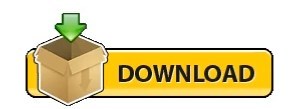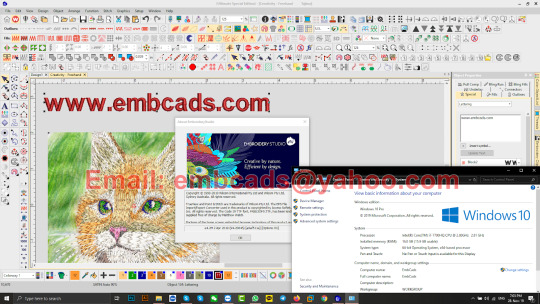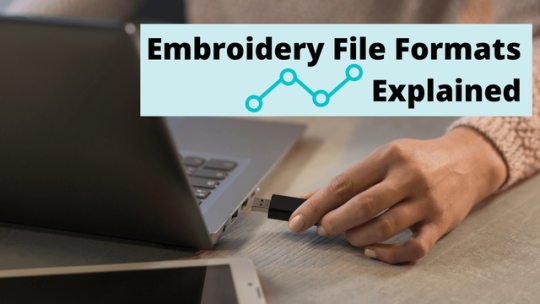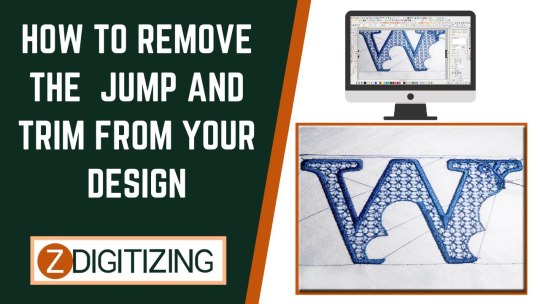#Object types in wilcom hatch
Text
Object types in wilcom hatch


Choose your desired method: “Pick Points” or “Select Boundary Objects”. Further specify the pattern on the Pattern panel.Ĥ. Choose between Solid, Gradient, Pattern or User Defined.ģ. Go to its Properties panel and choose the Hatch type that you would like to insert.

Find the hatch icon in the bottom right corner.Ģ. Here’s how to use the command in a few simple steps:ġ.Go to the Draw panel on the Home tab. The hatch command in AutoCAD is used to fill an area or selected objects with a hatch pattern or a fill. When creating your CAD drawing, you can decide on the pattern to be used to represent the material intended to be used during construction with AutoCAD’s hatch command. For this, AutoCAD uses “hatches” that represent solid masses and materials to be used and incorporated within the design when it’s built. When using AutoCAD to draft blueprints or designs, the CAD designer must keep in mind the type of material that will be used when the design is built. The font should now be 2 or more colors, and a tatami fill stitch will replace the fill stitch as needed.Part 4 of 13 in our How To Use AutoCAD series In this new window, under “stitch method” and “Use original values”, make sure the following are checked In the new window, under “special” tab, with the lettering showing in this window, scroll to the bottom. Type the name or monogram as you would like it to be regarding size, placement, etc. How do i get two color fonts to work? I can only see one color. Here is video showing how to install the fonts. However, my fonts will be below the standard fonts in all lowercase letters. The new fonts will now be in the “lettering values/object properties” box under alphabets. esa files from the first and drag to the USERLETW folder.ĥ. Once both the unzipped folder and the USERLETW folders are open side by side, select the. C://programs(x86)/wilcom/embroiderystudio/userletw)Ĥ. Open the USERLETW folder (By default, you will find this folder at the following location. esa format will be opened in a new folder. Open a new folder of your choice on your hard drive in order to save as an unzipped file for long-term storage.Ģ. I do not offer them in any other format, sorry.ġ. Most of my fonts are very small in data size, about 100 kb. They are not individual letters which must be imported individually and merged in editing software, like most alphabets you find on the web. Due to the nature of these fonts, they are treated like keyboard lettering in Wilcom software. esa format, which is the format that loads directly into the Wilcom software. What format do your fonts come in ? Are they available in. If any doubt, please email me at with any questions about compatibility before making a purchase. I always have the boyzrgross font totally free for you to check out and make sure it works as intended. Each font is one small file that works inside of the Wilcom software, they are not alphabet letters where each letter is its own file Wilcom Embroidery Studio, ES version 9 and newer. No, since my fonts are digital products I do not offer refunds. That is the best time since IĬan maybe be able to “see” what you may be having problems with, but most any other time is fine to call also. You are welcome to call me at 61, or email Normally I am working from about lunchtime until 5pm eastern time. What if I have questions or need to talk to you ? No, I am in now way affiliated with Wilcom International other than I have been a user of their embroidery digitizing software for over 20 years and believe it to be the best I am in the middle of totally reloading the site, this will take some time of course, please be patient.

0 notes
Text
Embroidery software and format

The world of machine embroidery makes a distinction between people who create designs from A to Z and those who only modify details (size, position, rotation, colors). There are very few cheap, high-level design software out there, and the vast majority only run on Windows. It's hard to get information on such software and we couldn't find any serious comparison other than this one from a manufacturer, which disappeared from their site.
A viewer/transformer/converter to import, view, adapt (a bit) and transcode a machine embroidery file. There is free software that does this, for example WILCOM TrueSizer or MyEditor
A plotter (vectorizer) for translating a raster image (*.jpg, *.png, etc.) composed of color pixels into a vector (manipulable shape). This kind of functionality is available in almost any drawing software, for example Inkscape. This tool should also make it possible to reduce colors, eliminate small areas, etc. of a raster image. Image processing software like the free GIMP can also reduce colors.
A vector graphics editor to create and/or adapt imported vector drawings. A vector object consists of either just a stroke, just a fill, or both. The editor should allow you to adjust colors, shape, rotation, position, line width, etc. It should also include smoothing and additive geometry operations. Since we can import vector drawings, we can at the limit do without them, but that makes the work more complicated.
A digitizer (digitizer) to translate a vector design into configurable embroidery objects. Here is an example: A thick line around a circle is a drawing object, a satin border around a circle is an embroidery object.
An embroidery object editor, operating on similar principles to the vector editor, but also allowing detailed configuration of stitch generation (density, type of embroidery, pattern, underlays, color, borders, etc.)
A stitch editor (for embroidery plan generated from embroidery objects or for embroidery packages imported with a machine file)
A lettering module to create lettering directly, from fonts already digitized into embroidery objects.
Good software integrates these modules seamlessly and offers additional functionality, e.g. management of yarn palettes, hoops, pull/push compensation for fabrics, photo transformation, etc. It should be able to export an embroidery plan for any machine format.
The only affordable software in this category are Stitch Era and Embird. Stitch Era is available for rental (a basic version at $36/2 months, a full version for $192/year) and can be obtained for free for education under certain conditions.
The only interesting free and open source solution at the moment (May 2018/February 2021) is the Inkstitch extension for Inkscape, for which we wrote a tutorial. Inkstitch is more difficult to learn than software intended for the general public since you have to learn a lot of features of the Inkscape drawing software. In a context of education in computer tools, this does not pose a problem, since learning technical drawing software is part of the desired ICT knowledge. Knowledge of Inkscape will also be useful for laser cutting, logo design, etc.
The best-known embroidery software editor is Wilcom, notably for its professional E4.5 product or more recently the semi-professional Hatch. Their products seem to be popular in education (also according to their site), however, we didn't test them because a Wilcom salesman decided we weren't worthy of being customers. Wilcom is also at the origin of several software sold by the manufacturers.
Embroidery software can be classified according to nine "modules":
Work with raster and vector images (import, edit, and scan both types of formats)
Geometric primitives. Modifying and arranging objects (essential functions for digitizing and editing embroidery objects)
Lettering and monograms
Rows of stitches (fill, outline, compensating stitches, underlay stitches, jump stitches and break stitches) including parametrization, conversion, etc.
Applied
Traverse objects (examine sequences of objects, see objects by color, etc.)
Embroidery visualization (realistic (3D), with rows of stitches (2D), with lines (without stitches), and with stitches
Read the full article
#embroidery#embroidery designs#embroidery machine#embroidery software#embroidery tips#OESD#sewing#sewing machine#tutorial
1 note
·
View note
Text
Remove trims in wilcom hatch


Then save to the emb file and send the design file to the machine. Design of embroidery and digitization, I work in Wilcom, Pattern maker, Gis. Fixed bug when too many trims are defined for printout and outputting. PACK CREATION FABRIC AND TRIM SOURCING PATTERN AND SAMPLE MANAGEMENT. the Digitizer does NOT determine the type of material to be used- they prepare the st. In response to some comments in Mike Cyrus response: 1. An excellent one will provide a FREE quote and visual sample. Repeat the procedure above until the desirable outcome is obtained. We recommend you uninstall the previous version using the window control panel. Answer (1 of 2): A good digitizer will let you know IF the design needs to be simplified.

Please also note that the trim inside Branching is also controlled by “ Inside object” in Connectors.Īfter you have completed this procedure, you may exam the outcome by “ Travel by Trim” in Travel toolbar, or you may visually exam the outcome by turning on TrueView. Note: the lettering part is done with Branching, and the number of trims is reduced for the lettering part. The following procedure needs to be followed:Ģ) Click on the Branching button in the Arrange toolbox, or hit the “ i” key (the shortcut of Branching)ģ) Mouse click on the left side of the lettering to define the start point of the BranchingĤ) Mouse click on the right side of the lettering to define the end point of the Branching If the lettering part in the emb file is not the lettering object, then you need to apply Branching for the lettering part. Note: the number of trim should be reduced for the lettering object. Or highlight the number in the value box and type in a new number and hit the Enter key You can choose to turn off automatic trimming, to always trim connecting stitches, or to trim only when the connecting stitch is longer than a specified.

This can be achieved by following the procedure below:Ģ) In the Object Properties dialog box, go to the Connectors tabģ) Select “ Inside object” in the dropdown listĤ) Increase the value for “ If next connector > ” to 3mm or more by using the sliding bar in the value box. Level 3 includes advanced shaping tools, a comprehensive set of stitch types, and utilities to enhance artistic interpretation and. Made for anyone who loves creating designs, ready for commercial machine embroidery digitizers. If the lettering part in the emb file is the lettering object, then you need to adjust Connectors parameter for the lettering object. Home / Embrilliance Software / StitchArtist / StitchArtist Level 3. You have found that there are too many trims between letters when stitching on your machine. 1-4 Working Space - Exit & Remove Licenses with Hatch Embroidery Learn about your working space, Menu Bars, Ribbon Bar and how to exit the program.

0 notes
Text
Wilcom hatch add stitices

Looking to start embroidery digitizing to create or edit embroidery Some people swear by Floriani while others are in love with Hatch.Īs I was following the introduction to Hatch in Melbourne I resize, add lettering etc or digitize your own embroidery designs from. Wilcom Hatch Embroidery Software: It is a software that not Embrilliance StitchArtist (Level 1) Machine Embroidery Digitizing Software. You will have to upgrade the version to Embrilliance Essentials (the next level) to be able to merge designs or resize designs. Then to build on that you get more You can also buy Wilcom Hatch on a monthly payment plan. We have tried to simplify this by finding out what the common tasks or activities are that they are looking to do. Hatch by Wilcom Embroidery Digitizing Software Embrilliance, MAC or PC, No, but they do have a day money back guarantee. When I first started embroidering, I imagined putting an SVG or JPG image on a USB The main reasons I like Hatch more than Embrilliance. forums and message boards let sewers share and discuss sewing experiences. Even the fonts that come with Embriliance aren't.ĭigitizing Software: Embrilliance vs. Hatch also comes with more built in fonts than Embrilliance and, IMO, are better digitized. › blog › item › comparing-fonts-embrilliance-hatch. I took a picture of dopeboy logo to test and stitched it on my se and it came out perfect with a 5x7. EMB design, you maintain all special effects, fills and stitch-scale.Hatch is the digitizing app out there. It provides an all-in-one utility through a number of ways. EMB file recommended? Simply because it is the ideal format for your day-to-day needs. EMB format before subsequently exporting it to another embroidery format.Īpart from being the most popular format, why is. This means that when you finish working on a design, you should save it in the. EMB file, as this file format stores ‘true object based properties’ so you can easily edit it.EMB is the file format that is generally recommended you work with at the first instance, with many digitizers (professionals and hobbyists alike) using the. As mentioned earlier, it is recommended that your save your original file (your source format) as.

Machine formats are created to suit a specific type of machine. Source formats are specific to the software used to create the design (for example the. Going a step back, one of the first things to keep in mind is the difference between “source formats” and “machine formats”. This will be shown by the lower grade and may state “estimates stitches or recognized stitches” depending on the quality of the file. EMB or it was opened from a stitch based file. Lower grades indicate that someone has converted the design from a stitch format to. EMB” file and has all the original settings the digitizer used. At the bottom of the dialog box you’ll see the “EMB Grade”. Click on the “Design Settings Menu” at the top, then click “Design Information”. To tell the difference between a stitch-based file and a pure. It is also helpful to note the original creator of the file and the software used to create the file. EMB file, so knowing the difference will help you in the long-run. Many companies will start with a stitch-based file and then open and save as an. This will ultimately affect any further work you choose to do on the design. It is important to differentiate between the files as this differentiation is the key to finding out the quality of your file. Note the difference between the stitch-based file and the pure. Hatch makes it easy for you to keep your working files (.EMB) separate from your machine format files. This does not mean that the design cannot be saved in the specific machine format. When most customers are finished working with a design in Hatch, they will click “Save As” but they do not find their file format listed. EMB if my machine does not use this format? How do I save my designs to the proper format for my machine?ģ. Three questions we receive frequently are:ġ. Why is it that when I try to save my designs using the ‘save as’ option there is no option for my machine format?Ģ. That’s why we love it when we receive any feedback or correspondence. Because of this, we’re constantly committed to looking for ways we can improve the software and the user experience even further.


Since we’ve released Hatch Embroidery, we’ve received many lovely reviews from our users! We are thrilled that so many people already use and love Hatch. We guide you step-by-step, showing you exactly where to click and what to do when it comes to saving and converting your files. In this week’s blog we’re taking you through the process of exporting your files into your preferred machine format and why it is so important to save your designs as.

0 notes